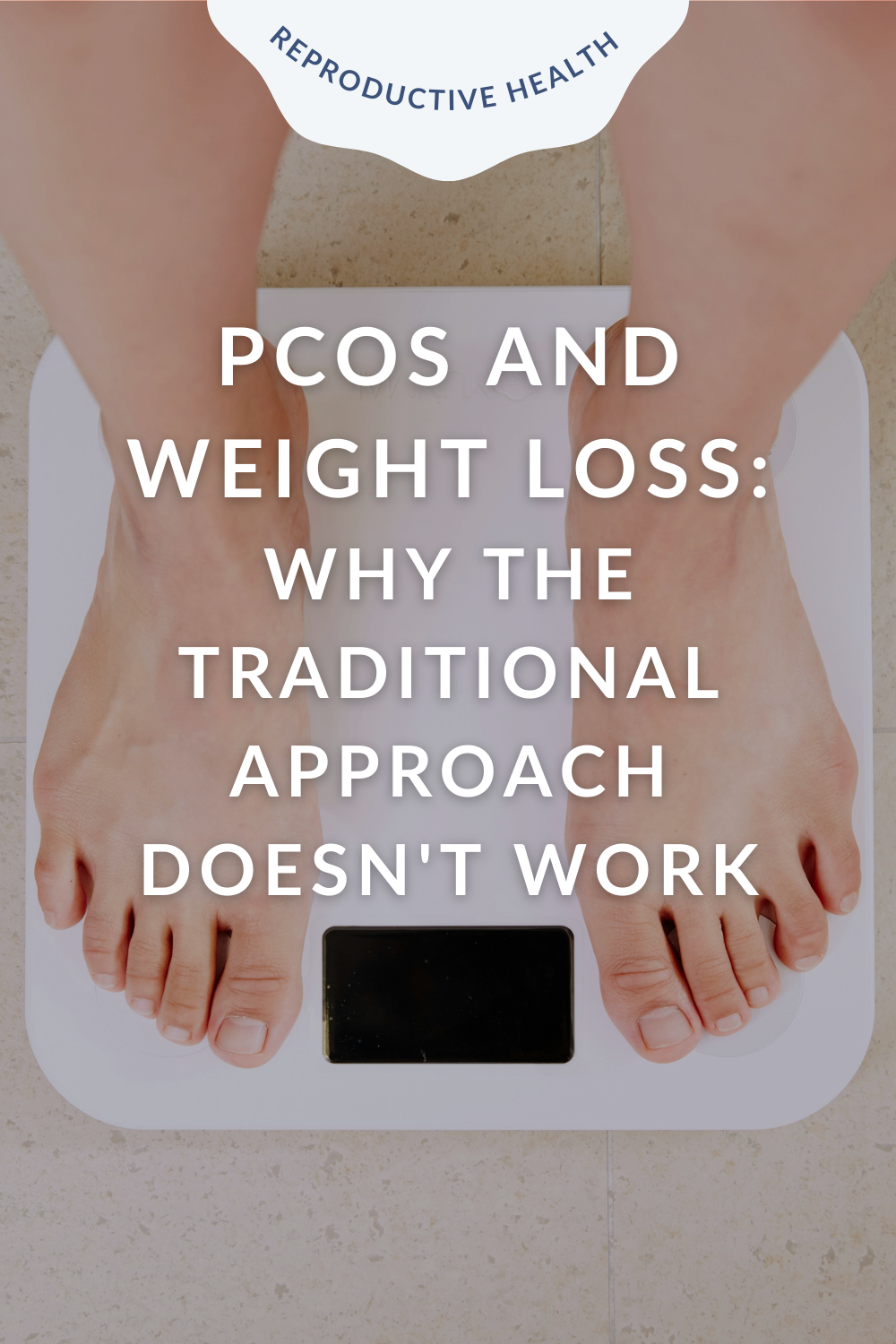10 Simple Meal Prep Tips for Busy People with PCOS
What is Polycystic ovary syndrome?
Polycystic Ovary Syndrome (PCOS) is a complex endocrine disorder that affects hormone levels in people with ovaries. Those with PCOS often experience symptoms like irregular or absent periods, acne, excessive hair growth on the face or body.
Beyond the very day discomforts, PCOS increases the risk of developing Type 2 diabetes, heart disease and metabolic dysfunction-associated steatotic liver disease (previously known as fatty liver).
Diet and PCOS
Diet plays a critical role in managing PCOS symptoms and reducing the risk for complications! We’re happy to see nutrition included in the 2023 International Evidence-Based Guidelines for the Assessment and Management of PCOS.
While there’s no “perfect PCOS diet,” research suggests that the Dietary Approaches to Stop Hypertension (DASH) diet and Mediterranean Diet shown great promise in reducing insulin resistance, managing blood sugar levels, and lowering high androgen levels. These diet patterns can be a game-changer in supporting hormones and overall health for those managing PCOS.
That said, you don’t have to do a complete overhaul on your meals to gain their health benefits. Remember, nutrition changes build over time, and sustainability is key!
Before we get started, check out our30-Day PCOS Meal Plan + Food Guide Bundle – this is a great first step in your nutrition journey. Take the guesswork out of every day eating with clear recipes and grocery lists, kitchen staples guides, product recommendations and more!
10 PCOS-Friendly Meal Prep Tips
Managing PCOS is tough on its own, and we don’t want to burden you with unrealistic nutrition tips. Instead, we’ve outlined 10 simple meal prep tips to help streamline your cooking. Whether you're juggling work, family, or hobbies, these tips can help you save time, stay on track, and support your health. Let’s dive in!
1. Start with a plan. Do you make a grocery list? Before heading to the shops, take a few minutes to map out your meals for the week. This doesn’t have to be an intensive process—just having an idea of which main ingredients (carbs, proteins, and veggies) you'll combine is a great start. Not only does this save you from impulse buying, but it also helps reduce decision fatigue on a busy day.
2. Pre-chop your aromatics. Personally, a meal is not complete without aromatics like garlic, onions, ginger, scallions, and the like. These ingredients are a simple way to elevate a dish, but prepping them fresh can be a hassle. Instead, chop a big batch at the start of the week, store them in airtight containers or freeze them, and they’ll be ready to pop into stir fries, sauces and whatever goodness you have on the menu. Plus, no more wasted herbs or garlic cloves sitting in the fridge!
3. Batch cook staples. Batch cooking is a game changer for busy people. Cook larger quantities of staple foods, like rice, beans, hard boiled eggs, chicken breast, roasted veggies, and store them in mix and match into balanced meals throughout the week. By preparing these staples in advance, you can easily create balanced meals that include protein, unsaturated fats, and fibre - all essential for managing blood sugar levels. On a similar note, double up your portions when cooking meals – this makes for a great lunch the next day, or freeze it for a rainy day.
4. Use pre-cut and pre-washed ingredients. There’s no shame in shortcuts! Save time by buying pre-cut and pre-washed ingredients. Options like pre-cut veggies, pre-washed salad greens, canned pulses, or pre-cooked shrimp allow you to skip the preparation and get straight to cooking. These conveniences can significantly reduce meal prep time, making it easier to whip up a healthy dinner after a long day. Personally, I always have a bag of frozen veggies can pop in the air fryer, frozen edamame I can microwave or boil, frozen individual packs of trout that can defrost in five minutes under running water and pre-cooked frozen shrimp.
5. Make one-pot meals. Simplify both cooking and cleanup with one-pot meals. Soups, stews, and stir-fries are great options for PCOS-friendly meals that you can whip up in a hurry, especially if you’re following the principles of the DASH or Mediterranean diets. For example, a hearty vegetable stew with chicken, barley, carrots, celery, onion can be both nutritious and easy to toss together in one pot. Not to mention, the easier cleanup.
6. Prepare grab-and-go snacks. Having healthy snacks on hand is a must, especially for those managing PCOS or busy lifestyles. Prepare grab-and-go snacks like pre-cut fruits, a handful of almonds, or yogurt parfaits with berries and granola. These snacks help prevent sugar crashes and stabilize your blood sugar throughout the day. For instance, pairing almonds with an apple offers a perfect balance of fiber, healthy fats, and protein—keeping you satiated and energized until your next meal.
7. Prep proteins in advance. Protein is crucial for managing PCOS symptoms and staying satiated after meals. Cook proteins like chicken, fish, or tofu in batches at the start of the week. For example, bake a few pieces of salmon or roast tofu and use them throughout the week in salads, wraps, or stir-fries. Having a lean protein source readily available not only saves time but also helps regulate blood sugar levels by ensuring you’re consuming enough protein with each meal.
8. Freeze portions for later. Don’t hesitate to freeze your meals! There’s minimal nutritional difference between fresh and frozen food. Cook a big batch of soup or stew and freeze individual portions for those days when you're too busy to cook. For example, make a large pot of veggie and lentil soup, freeze half, and save it for a quick, nutritious meal later in the week. This way, you can have a healthy, satisfying meal on hand without the hassle of cooking from scratch.
9. Up the nutrition in your takeout. Takeout is still part of a healthy eating pattern! There are so many reasons why you may opt for it: enjoyment, supporting a local business, time. If you’d like, you can approach takeout with a “Nutrition by addition” mindset - what can you add to the chosen dishes to up the nutritional value? For example, if you order a rice-based dish or pizza, consider adding a fresh salad, roasted veggies, or sautéed greens from home to boost the fibre and nutrient content. If your takeout lacks protein, add a lean protein source you prepped in advance, like grilled chicken, boiled eggs, or baked tofu.
10. Clean as you go. Last but certainly not least, clean as you go. Always. Always. Always. I promise that cultivating this habit can save a lot of time, alleviate stress and make the overall cooking experience much more enjoyable without having to dread the post-meal clean up. By wiping the counter, washing the chopping boards, mixing bowls, utensils as you go, you'll find that you have minimum leftover dishes by the time your meal is complete. A clean kitchen makes meal prep feel less overwhelming and more inviting, allowing you to focus on preparing nutritious meals that support your health!
Meal prepping can be a game-changer for anyone focused on healthy eating, especially those managing PCOS. By using these simple tips and strategies, even with a busy schedule or under stress, you can prepare nutritious meals with ease.
You’ll be surprised at how much time you can save and how much stress you can eliminate. Instead of viewing cooking as a chore after a long day, it can become a more enjoyable, stress-free part of your routine. So, get creative, have fun with your meal prep, and feel empowered knowing that each meal is supporting your health and wellbeing!
Hi! I’m Trista
A Registered Dietitian and reproductive health expert. I’m here to help you gain confidence to overcome your Polycystic Ovary Syndrome and digestive health woes, while bettering your relationship with food.
CATEGORIES
Ready to take your meal prep to the next level?
Check out our 30-Day PCOS Meal Plan + Food Guide Bundle to take the guesswork out of every day eating (Includes easy-to-follow recipes, grocery lists, pantry staple guides, product recommendations and more!).
Craving deeper change? Our 1-on-1 Nutrition Coaching Programs give you personalized and structured guidance to develop sustainable eating habits to thrive with PCOS.
References
Emanuel, R. H. K., Roberts, J., Docherty, P. D., Lunt, H., Campbell, R. E., & Möller, K. (2022). A review of the hormones involved in the endocrine dysfunctions of polycystic ovary syndrome and their interactions. Frontiers in endocrinology, 13, 1017468. https://doi.org/10.3389/fendo.2022.1017468
Helena Teede et al. International Evidence-based Guideline for the Assessment and Management of Polycystic Ovary Syndrome 2023. Monash University. https://doi.org/10.26180/24003834.v1
Lau, G. M., Elghobashy, M., Thanki, M., Ibegbulam, S., Latthe, P., Gillett, C. D. T., O’Reilly, M. W., Arlt, W., Lindenmeyer, A., & Kempegowda, P. (2022). A systematic review of lived experiences of people with polycystic ovary syndrome highlights the need for holistic care and co-creation of educational resources. Frontiers in Endocrinology, 13. https://doi.org/10.3389/fendo.2022.1064937
Li, L., Pegg, R. B., Eitenmiller, R. R., Chun, J., & Kerrihard, A. L. (2017). Selected nutrient analyses of fresh, fresh-stored, and frozen fruits and vegetables. Journal of Food Composition and Analysis, 59, 8–17. https://doi.org/10.1016/j.jfca.2017.02.002
Xenou, M., & Gourounti, K. (2021). Dietary Patterns and Polycystic Ovary Syndrome: a Systematic Review. MAEDICA – a Journal of Clinical Medicine, 16(3). https://doi.org/10.26574/maedica.2020.16.3.516















